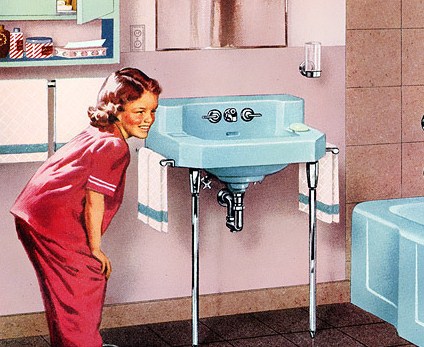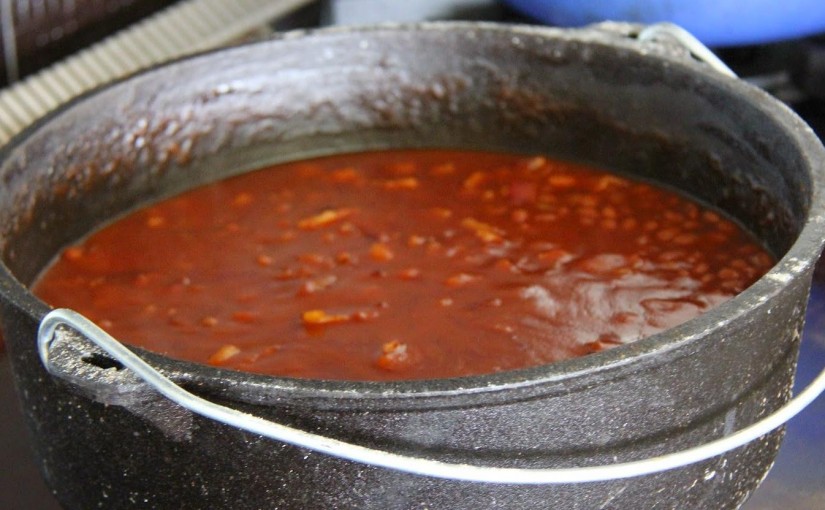
Surely we all know that proper tooth care is vital, but it can be challenging with little ones. I’ve witnessed enough pediatric tooth decay and subsequent dental work (sometimes traumatic) to know without a doubt that following these tips are worth the time and effort to learn how to get kids to brush their teeth.
1. Start Young
As soon as baby’s first tooth comes through, start brushing it regularly with a soft bristle baby toothbrush (the “baby” ones flare out to prevent choking). Let the little tyke use it as a soother if he likes — get him used to it. Baby tooth paste is available that is safe to be swallowed by the very young ones, but isn’t entirely necessary. The important thing is to brush it often. The most current recommendations for use of fluoride toothpaste is no more than a ‘smear’ or ‘rice-size’ amount of fluoridated toothpaste for children under three years old, and no more than a ‘pea-size’ amount of fluoridated toothpaste is appropriate for children aged three to six. More on fluoride later.
2. Set an Example
Children are very big on mimicry, so let them see you brushing. Make it an activity that you do together: “See, we’re all brushing!” Give the child their own toothbrush to mimic you with. After they’ve had a turn to brush themselves, then its your turn to brush their teeth (to make sure it was done properly).
3. Even If They Fuss, Just Do It
They might fuss — just do it anyways. This is one of those things that needs to be done. As a mom it can be hard to forcibly do something to your child that is making them cry — just do it anyways. The alternative (tooth decay) is far worse than a few moments of crying. You’re not hurting them, and the moment you stop brushing they stop crying, so clearly its not damaging them physically or emotionally. Think of it like a dirty diaper in that you do it whether they cry or not because its vital. Don’t learn this lesson the hard way (at the pediatric dentist office).
4. Make It Routine
With children, routine is big — really big. Do the same things every day at the same time, it doesn’t take long for them to get the gist. This goes for anything. After you eat, you brush. Before bed, your brush. Before school, you brush. Make it routine.
5. Two Minutes
Dentists all agree that 2 minutes of brushing is necessary to get the job done on a mouth full of teeth. As soon as the child is old enough to tolerate 2 minutes of brushing, make that the standard. I’m not suggesting that 2 minutes is necessary for baby’s first tooth at 4 months old, but work towards that. Once all their teeth are in: 2 minutes per brushing session.
6. Use an Hourglass (or other timer)
You can get a 2 minute hourglass for under $1. Most kids are surprisingly fascinated with hourglasses and once that’s part of the routine they will gladly use it. There are also electronic alarm timers, flashing timers, musical toothbrushes that sing for 2 min, so use whatever it takes.
7. Pick Your Flavor
Some kids can be very picky about the toothpaste flavor. Some really hate mint (they think the tingle is “spicy”). If necessary, let them try all the flavors they want. Whatever it takes to get them to brush.
8. Brush After Acidic Foods
Acid is what attacks the enamel, leading to decay. If you give your kids anything particularly acidic, make a special case of brushing right after. For example, I have a close friend who is an extreme “natural/health food” practitioner and gave their first-born lots of vitamin C, in liquid and chewable form. (Vitamin C is a strong acid.) The child had massive tooth decay by age 2 and had to get his baby teeth extracted. So if your little guy likes to suck on lemons, eat citrus, or you give him chewable vitamin C, make a point of brushing right after.
9. Use Fluoride*
Fluoride prevents tooth decay. Use fluoride toothpaste: no more than a ‘smear’ or ‘rice-size’ amount of fluoridated toothpaste for children under three years old, and no more than a ‘pea-size’ amount of fluoridated toothpaste for children aged three to six. Even the “natural” toothpastes use fluoride. You don’t want your kids to swallow too much fluoride, but if they swallow a bit, do not panic, a little bit it actually beneficial. Any negative effects of swallowing fluoride can only come from cumulative over-ingestion — in other words it has to build up over time. Remember: most municipalities add fluoride to the water, so you and your kids have likely been drinking it for years. When the child is old enough to not swallow it, begin using a fluoride rinse like ACT Kids.
More on Fluoride:
Fluoride is a natural mineral found abundantly in water, soil and rocks throughout the Earth’s crust. Fluoride prevents tooth decay in two ways: First, it prevents the bacteria in plaque from forming acids that erode the tooth enamel and cause decay. Second, in areas of the teeth that have already been damaged by acids, fluoride builds up in the weakened areas and begins to strengthen, or remineralize, the teeth. Read more about fluoride at Medical News Today and American Chemical Society.
*In some alternative “natural/health” circles fluoride is considered bad. Some people think that fluoride is part of a global conspiracy to poison us all. Mommy Perfect isn’t here to litigate the merits of these theories. If you feel strongly that fluoride is bad, then do what you think is best for you and your children. Evidence overwhelmingly supports the use of fluoride to prevent tooth decay, which is the point of this article. Feel free to comment below if you have strong opinions about this matter. Even if you don’t approve of fluoride, I hope you adopt the other points above.
Disclaimer: this article may contain affiliate links.

